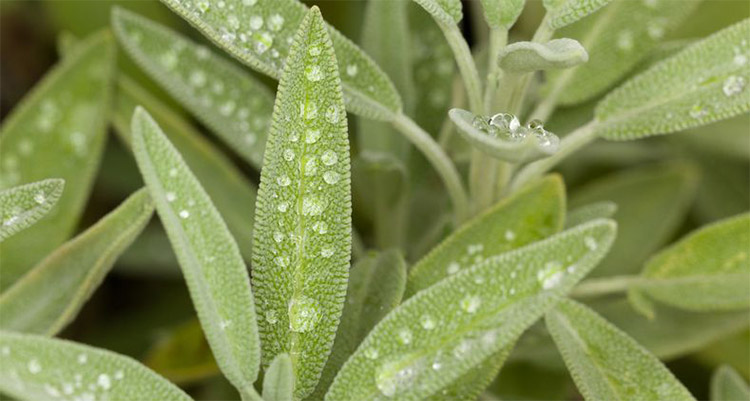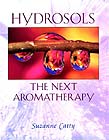Sage Hydrosol
Salvia officinalis

Although I have enjoyed working with Common Sage Essential Oil for years and have also grown varieties of sage and and created infusions and tinctures, working with Sage Hydrosol is new to me at the time of this writing.
The Sage Hydrosol (Salvia officinalis) that I am working with possesses an aroma that is very consistent with the fresh herb. Very pleasant and herbaceous.
Emotionally, I am finding Sage Hydrosol energizing and uplifting. It makes a nice addition to room mists intended to help stay alert and focused.
Look to the citations from hydrosol experts Suzanne Catty and Len and Shirley Price in the Uses and Applications section below for information on the potential benefits of Sage Hydrosol.
Botanical Name
Salvia officinalis
Aromatic Strength
Medium
Shelf Life
Up to 2 years if stored properly (refrigeration is recommended).
Reported Properties, Uses and Applications
Suzanne Catty states that Sage Hydrosol is astringent and is suitable for normal to oily skin. In massage and mist applications, it is considered a circulatory stimulant. It helps balance the hormones and autonomic nervous system and may be helpful in easing the symptoms of menopause, PMS and menstrual cramps. Catty suggests that when Sage Hydrosol is applied at the onset of swollen lymph nodes, it can help reduce the swelling. She also indicates that Sage Hydrosol may be effective in reducing underarm and foot sweating, particularly if the sweating is correlated with an imbalance in the parasympathetic/sympathetic nervous system. [Suzanne Catty, Hydrosols: The Next Aromatherapy (Rochester, VT: Healing Arts Press, 2001), 127-128.]
Len and Shirley Price report that the Sage Hydrosol that they analyzed consists of 50-55% eucalyptol, 37-55% ketones and 5-6% alcohols (these ranges do not include the water present in the hydrosol) and possesses the following properties: "analgesic, anticoagulant, anti-infectious, anti-inflammatory, antiviral, bactericidal, calming, cicatrizant, decongestant, digestive, expectorant, lipolytic, mucolytic, sedative, stimulant" [Len Price and Shirley Price, Understanding Hydrolats: The Specific Hydrosols for Aromatherapy: A Guide for Health Professionals (London: Churchill Livingstone, 2004), 140.]
Safety Information
Read AromaWeb's Hydrosol Safety Guidelines.
The hydrosol information and safety precautions provided within this area are intended for educational purposes only. Neither AromaWeb, LLC nor its founder take responsibility for how you use the information provided.
Avoid Sage Hydrosol in instances of high blood pressure and during the first trimester of pregnancy. [Suzanne Catty, Hydrosols: The Next Aromatherapy (Rochester, VT: Healing Arts Press, 2001), 127-128.]
Helpful Sources of Information About Sage Hydrosol

Hydrosols: The Next Aromatherapy
Author: Suzanne Catty

Understanding Hydrolats: The Specific Hydrosols for Aromatherapy
Authors: Len Price and Shirley Price
